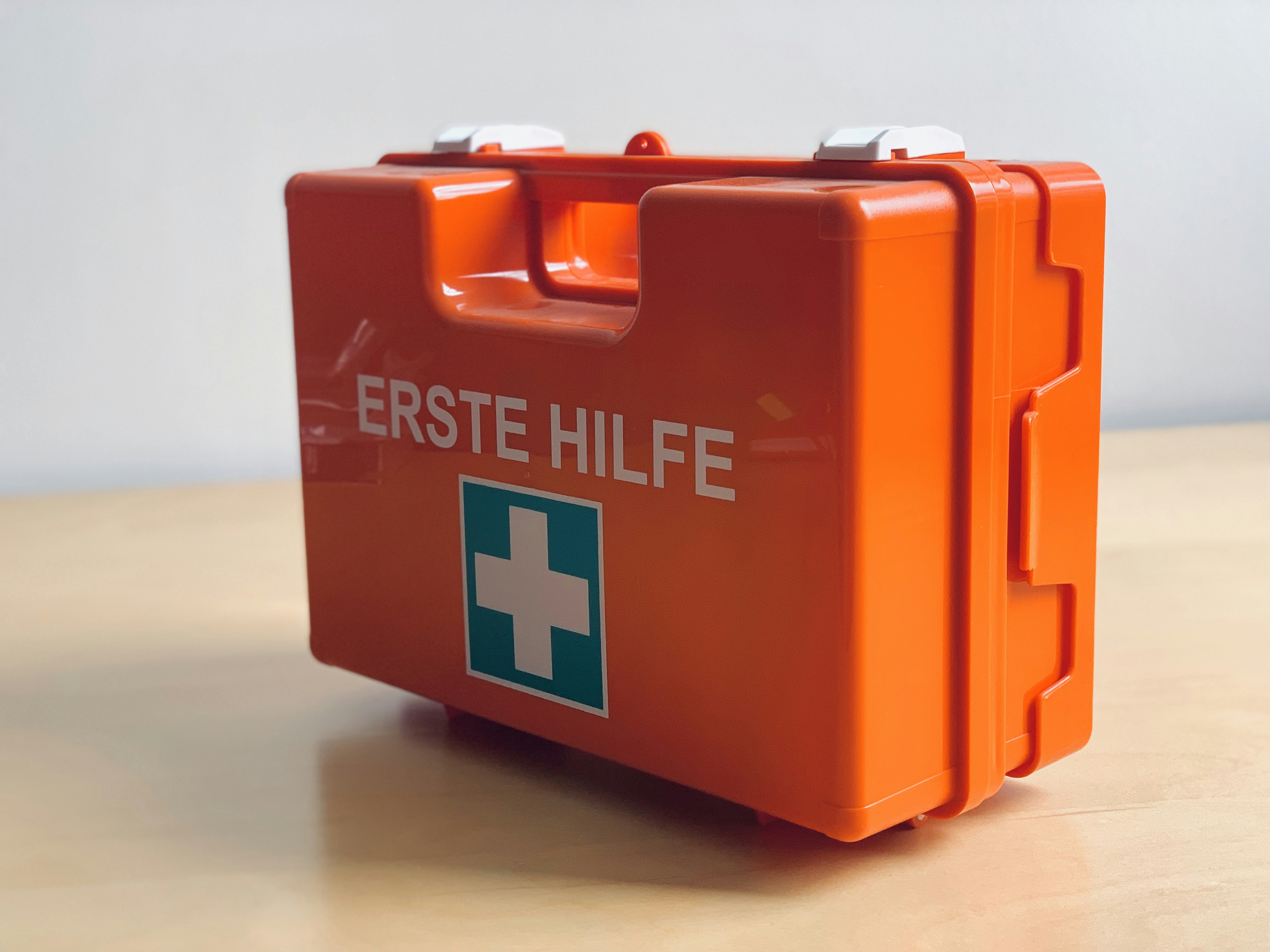Congratulations on becoming a new parent! As you embark on this exciting journey, it’s crucial to equip yourself with essential first aid knowledge that can potentially save your baby’s life. In this article, we will provide you with some valuable tips on how to handle common emergencies, such as choking, burns, and fevers, ensuring that you feel confident and prepared to handle any situation that may arise. So, let’s dive in and discover the essential first aid tips every new parent should know.
This image is property of images.unsplash.com.
Choking
Choking can be a frightening experience, but knowing how to recognize the signs and perform the Heimlich maneuver can potentially save a life. When someone is choking, they may clutch their throat or exhibit signs of distress. If they are unable to speak, cough, or breathe, immediate action is necessary.
To perform the Heimlich maneuver, stand behind the person and wrap your arms around their waist, making a fist with one hand. Place the thumb side of the fist against the person’s abdomen, just above the navel, and grip it with your other hand. Give quick, upward thrusts until the object is dislodged or the person can cough forcefully. Remember to call for emergency help if the person becomes unresponsive.
When it comes to infants, the technique for clearing an airway obstruction is different. Support the infant’s head and neck with one hand and place them face-down on your forearm, ensuring their head is lower than their chest. Deliver five back blows between the shoulder blades, using the heel of your hand. If the object is still stuck, turn the infant face-up and perform five chest thrusts, using two fingers to push forcefully on the center of the chest just below the nipple line. Repeat these steps until the obstruction is cleared or help arrives.
Cuts and Scrapes
Cuts and scrapes are common injuries, especially among active children. It is important to properly clean and cover these wounds to prevent infection.
Begin by gently cleaning the wound with mild soap and water. Avoid using harsh chemicals or antiseptics, as they can further damage the tissue. Pat the area dry with a clean cloth or sterile gauze. If the bleeding is persistent, apply gentle pressure with a clean cloth or bandage for a few minutes until the bleeding stops.
Once the bleeding has subsided, it is crucial to cover the wound to protect it from dirt and bacteria. Use sterile gauze or a non-stick bandage to cover the wound, securing it with adhesive tape or a bandage. Regularly change the dressing to promote proper healing.
If the wound is deep, jagged, or shows signs of infection such as redness, swelling, or pus, seek medical attention as stitches or further care may be required.
Burns
Burns can cause significant pain and damage to the skin. Immediate action is necessary to alleviate pain and prevent further injury.
For minor burns, the first step is to cool the burn by running it under cool water for at least 10 minutes. This helps to reduce the temperature of the burnt area and soothe the pain. Avoid using ice or very cold water, as it may further damage the tissue.
After cooling the burn, cover it with a sterile, non-stick dressing or a clean cloth to protect it from infection. Be sure not to use adhesive bandages directly on the burn as they can stick to the skin and cause irritation.
If the burn is severe, covers a large area of the body, or is located on the face, hands, feet, or genitals, it is important to seek medical attention immediately. Serious burns may require specialized treatment to prevent complications and promote healing.
Falls
Falls are a common occurrence, especially among young children who are learning to navigate their surroundings. It is crucial to promptly assess for injuries and provide appropriate care.
Begin by checking for any signs of visible injuries, such as cuts, bruises, or deformities. Look for any swelling or tenderness that may indicate a broken bone. If there are any concerns about potential head, neck, or spinal injuries, it is imperative not to move the person and to call emergency help immediately.
If there are no serious injuries, gently assist the person in sitting or lying down to prevent further harm. Apply a cold compress or ice pack wrapped in a cloth to any areas of swelling or bruising to help reduce pain and inflammation.
In the case of a suspected broken bone, immobilize the area by using a splint or by securing the injured limb to a stable object (if available) to prevent further movement. Seek medical attention as soon as possible to properly assess and treat the injury.
This image is property of images.unsplash.com.
Seizures
Seizures can be a frightening experience for both the person having the seizure and those around them. Your role is to stay calm, observe the seizure, and provide a safe environment for the individual.
First and foremost, do not try to restrain the person or put anything in their mouth during a seizure. Instead, move any nearby objects or furniture that could potentially harm them. Clear the area of hazards, such as sharp objects or hard surfaces, to minimize the risk of injury.
Protecting the person’s head is crucial during a seizure. You can place a soft, flat object like a pillow or cushion under their head to prevent it from hitting the ground. If the seizure lasts longer than five minutes or is followed by another seizure, call for emergency help immediately.
Once the seizure has ended, it is important to stay with the person and keep them calm until they fully regain consciousness. If the person is injured or unresponsive after the seizure, contact emergency help and provide them with the necessary information.
Fever
Fevers are often a sign of an underlying illness or infection, and it is essential to monitor and manage them appropriately to ensure the well-being of the person affected.
Using a thermometer is the most accurate way to measure body temperature. Digital thermometers are commonly used, and they can be placed under the tongue, in the ear, or on the forehead to obtain an accurate reading. Follow the instructions provided with your thermometer for the most accurate results.
Fever-reducing medication, such as acetaminophen or ibuprofen, can be used to alleviate discomfort associated with a fever. However, it is important to carefully follow the dosage instructions and to consult a healthcare professional if there are any concerns or if the fever persists or worsens.
While managing a fever, it is important to monitor for any signs of severe illness. These may include persistent high fever, severe headache, difficulty breathing, confusion, or lethargy. If any of these symptoms occur, it is crucial to seek medical attention immediately.
This image is property of images.unsplash.com.
Allergic Reactions
Allergic reactions can range from mild to severe and can be life-threatening. Recognizing the signs of an allergic reaction and having access to an epinephrine auto-injector, commonly known as an EpiPen, can be crucial in an emergency situation.
Common signs of an allergic reaction include hives, itching, swelling of the face, lips, tongue, or throat, difficulty breathing, wheezing, or lightheadedness. If someone exhibits these symptoms and is known to have severe allergies, administer an epinephrine injection immediately as instructed by their healthcare provider.
After administering the epinephrine, it is essential to call emergency help and inform them about the situation. Even if the symptoms improve or resolve, it is important to seek further medical care, as there is still a risk of a delayed reaction or recurrence.
Poisoning
Poisoning can occur in many different ways, whether it’s ingestion, inhalation, or contact with toxic substances. Recognizing the signs of poisoning and taking immediate action is crucial for the well-being and survival of the affected person.
Signs of poisoning can vary depending on the substance ingested or exposed to but may include nausea, vomiting, abdominal pain, dizziness, difficulty breathing, seizures, or loss of consciousness. If you suspect someone has been poisoned, contact the local poison control center immediately for guidance on what steps to take.
While waiting for assistance from poison control, provide first aid depending on the type of poisoning. This may include diluting the substance by drinking water (if appropriate), removing contaminated clothing, or rinsing the affected area with water. It is important to follow specific instructions provided by poison control or emergency responders.
Dehydration
Dehydration can occur when the body loses more fluids than it takes in, leading to an imbalance and potential health complications. Recognizing the signs of dehydration and taking appropriate action is vital to restore fluid balance and prevent further complications.
Signs of dehydration include increased thirst, dry mouth, dark urine, decreased urine output, fatigue, dizziness, or confusion. If someone exhibits these symptoms, offer fluids such as water, oral rehydration solutions, or clear fluids like diluted fruit juices or sports drinks.
In cases of severe dehydration or when the person is unable to tolerate oral fluids, seek medical advice immediately. Severe dehydration may require intravenous fluids to rehydrate the body effectively.
Nosebleeds
Nosebleeds are common and can be caused by various factors, such as dry air, nose picking, or trauma. Knowing how to handle a nosebleed can help control the bleeding and provide relief.
First, keep the person calm and seated upright to prevent blood from flowing backward. Have them lean slightly forward to avoid swallowing blood. Gently pinch the soft part of the nose together using your thumb and forefinger, holding it for around 10 minutes. This pressure helps to control the bleeding.
Applying a cold compress, ice pack, or even a bag of frozen vegetables wrapped in a cloth to the bridge of the nose can help constrict blood vessels and reduce bleeding. Make sure not to put anything inside the nose, as it may aggravate the bleeding or cause further injury.
If the bleeding continues for an extended period, recurs frequently, or is accompanied by other concerning symptoms, it is advisable to seek medical attention to identify and address any underlying causes.
By familiarizing yourself with these essential first aid tips, you can gain the confidence and knowledge to provide immediate care in various situations. Remember, always seek professional medical help when necessary, and prioritize the safety and well-being of those in need.











